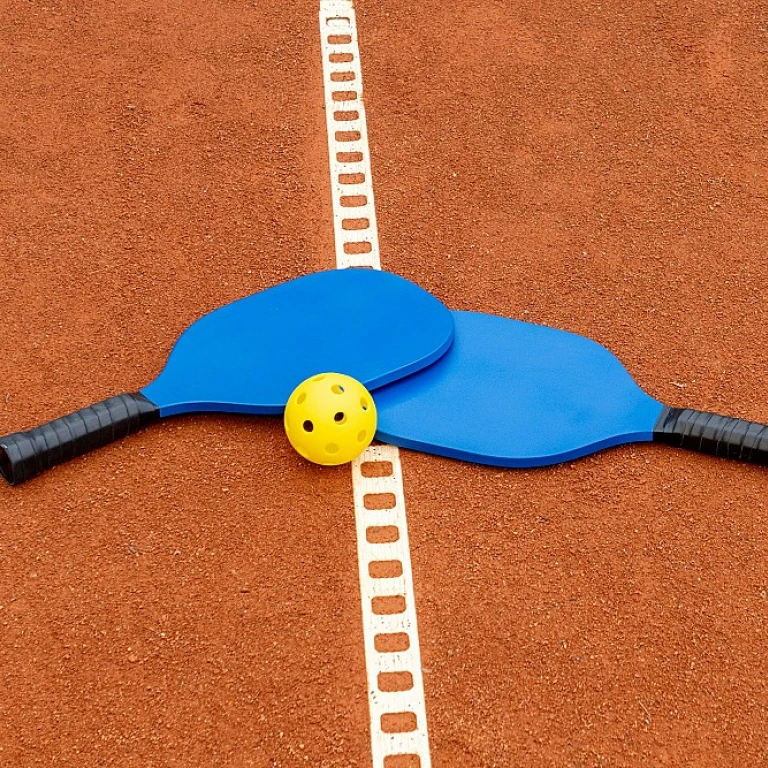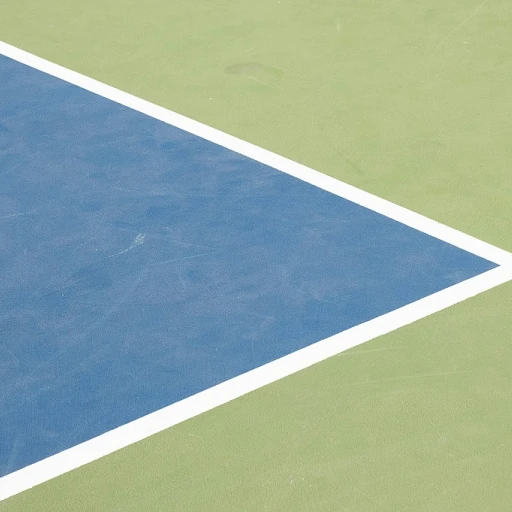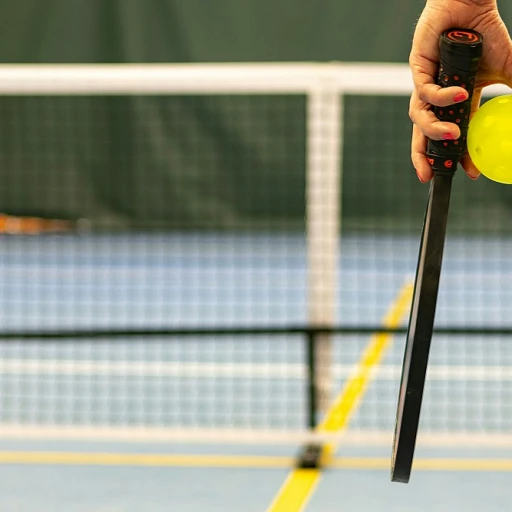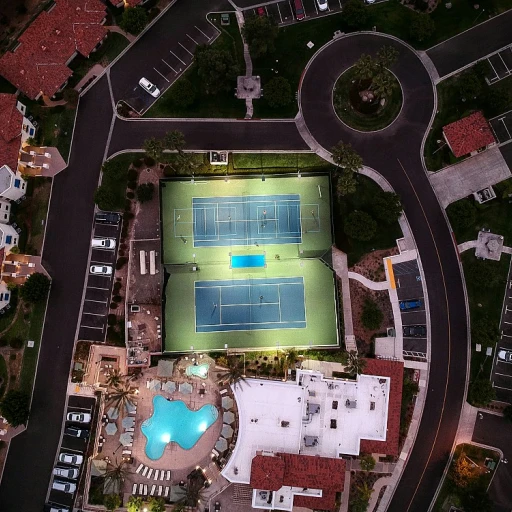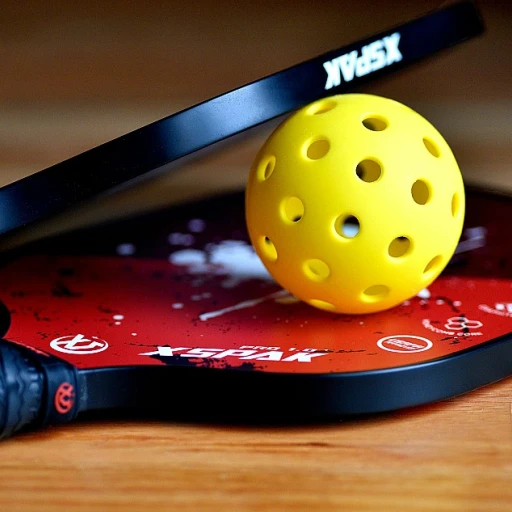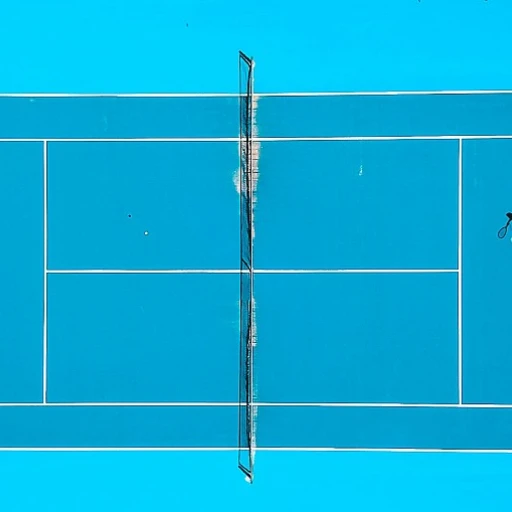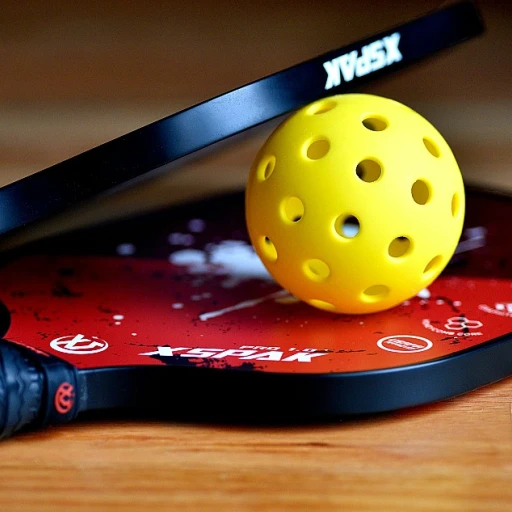
Understanding Pickleball Stacking
Grasping the Concept of Stacking
In the exhilarating world of pickleball, understanding the nuances of stacking can elevate your game significantly. Stacking involves strategic positioning and movement on the court, allowing players to optimize their strengths and counterbalance weaknesses, which can offer a considerable advantage during matches. At its core, stacking is a strategy used by doubles teams to switch their positioning on the court, especially when it comes to serving and returning. Typically, players have a dominant side; a right-handed player often prefers the left side of the court, while a left-handed player may find more comfort on the right side. By employing stacking techniques, partners can ensure that they play from their most effective positions, having their forehands in the middle and making forehands middle shots easier, leading to better play. Strategizing with your partner is key. This involves meticulous coordination, where each player will decide which side of the pickleball court they need to start on based on whether they are serving or returning serve. As the serving team begins their play, the server and their partner will line up on the 'correct' side of the court—the even or odd side—allowing the server to position themselves to their advantage immediately after the serve. Communication is paramount in stacking. Players often use hand signals to discreetly convey their intended movements on the court. This ensures that both partners are aligned in their strategy without alerting their opponents. With precise communication, teams can execute seamless transitions between positions, which can disarm opponents and create opportunities. As players improve their understanding of stacking pickleball, techniques and challenges will unfold naturally. Whether you're a seasoned player or just starting, delving into the intricacies of stacking can make a noticeable difference in your game, from executing a strategic serve return to maintaining optimal positioning. For a deeper dive into serve strategies that complement stacking, you can explore elevate your opening play to boost your game preparations.Benefits of Stacking in Pickleball
Maximize Competitive Edge Through Stacking
When incorporating stacking into your pickleball game, the benefits are multifaceted, offering strategic advantages that can enhance your team’s overall performance on the court. Here’s how stacking can transform your play and give you an edge over your opponents:- Optimized Player Positioning: Stacking allows each player to be positioned in a way that maximizes their strengths. Whether your team has a left-handed player or someone with a dominant forehand, optimizing their court position can mean the difference between advantage and disadvantage.
- Improved Team Cohesion: By aligning players strategically, stacking encourages better coordination and communication between partners. This can lead to more effective hand signals and clearer serve and return roles, ultimately keeping the team unified.
- Enhanced Control Over the Court: Transitioning to a stacked position after a serve or during play can help teams reclaim the middle of the court, forcing your opponents to adjust their strategy while allowing you to control the game’s pace.
- Strategic Advantage on Serve and Return: With stacking, you can choose which player returns serve based on the position of the serve, ensuring your most reliable player handles critical plays.
- Counteracting Opponent Strengths: Effective stacking can offset the strengths of your opponents, as you can respond dynamically to varying playing styles, keeping your side agile and adaptable.
Common Stacking Techniques
Techniques for Strategic Positioning
Exploring different techniques in pickleball stacking can greatly elevate your game strategy. One primary approach players often use is the arrangement based on the odd and even sides of the court. This involves players aligning themselves strategically depending on whether they are serving or returning serve.
Stacking typically starts with the serving team, where partners may begin on the same side to confuse opponents and create advantageous positions. The server often strategically positions themselves on the odd side court to maximize their strengths, especially if they have a powerful forehand aimed at the middle. Having forehands in the middle allows players to control more of the game, making it harder for opponents to find gaps.
Hand Signals and Communication
To ensure a seamless transition during stacking, teams often use hand signals. These signals help communicate where each player will be after the serve or return serve, ensuring clarity and avoiding confusion. This pre-determined movement helps both partners know their roles, reducing missteps and increasing court coverage.
Additionally, some teams choose formations based on player preferences or strengths, such as aligning a left-handed player on the left side. This can create a dynamic where both partners can utilize their strengths without compromising the team’s defensive capabilities.
Managing Team Dynamics
Successful stacking techniques require practice and a deep understanding between partners. Communication is paramount, as is the ability to quickly adapt when faced with varying play styles from opposing teams. Each team needs to adjust its strategy based on its position, ensuring every player covers their side efficiently, whether in the serving phase or during a return serve.
For those seeking to optimize their court dynamics further, considering factors like electrolyte balance can also impact performance. Learn more about enhancing your pickleball game to keep your energy levels high and reactions sharp.
Challenges and Missteps in Stacking
Overcoming Stacking Hurdles
While stacking in pickleball can be a game-changer, it does come with its own set of challenges. These hurdles can often trip up even the most seasoned players if not approached with caution and strategic planning. Understanding these challenges is crucial for any team looking to effectively incorporate stacking into their game.
- Position Confusion: One of the most common issues players face with stacking is confusion over positions. When players frequently switch sides, it can lead to uncertainty about who should be where, especially during fast-paced rallies. Clear communication with your partner is essential to avoid this.
- Timing and Coordination: Successful stacking requires precise timing and coordination between partners. Missteps in timing can result in players being out of position, leaving gaps on the court for opponents to exploit.
- Vulnerability to Lobs: Stacking can sometimes leave a team vulnerable to well-placed lobs. When players are stacked on one side, it opens up the possibility for opponents to target the less-covered area, especially if the players are not quick to adjust.
- Handedness Challenges: If both players are right-handed or left-handed, stacking can lead to awkward forehand and backhand situations, particularly when covering the middle of the court. This can be mitigated by practicing forehands and backhands from various positions.
- Communication Breakdowns: Effective communication is the backbone of successful stacking. Miscommunication can lead to both players going for the same ball or neither player taking charge, resulting in lost points.
These challenges, while significant, are not insurmountable. With practice and a strong understanding of each other's play styles, partners can navigate these obstacles and leverage stacking to their advantage on the pickleball court.
Tips for Effective Stacking
Practical Tips for Successful Stacking
Mastering stacking in pickleball requires not just understanding the strategies but also implementing them effectively on the court. Here are some practical tips to enhance your stacking game:
- Communicate Clearly with Your Partner: Effective communication is key when stacking. Use hand signals or verbal cues to ensure both players know their positions and responsibilities, especially during serve and return situations.
- Practice Switching Sides: Regularly practice moving between the left side and right side of the court with your partner. This will help both players become comfortable with quick transitions and maintaining balance on the court.
- Utilize Forehands in the Middle: When stacking, aim to position players so that forehands cover the middle of the court. This allows for stronger and more controlled shots, reducing the chance of errors.
- Adapt to Opponents: Adjust your stacking strategy based on your opponents' strengths and weaknesses. If your opponents struggle with cross-court shots, position your team to exploit this.
- Stay Aware of Court Positioning: Always be mindful of your position on the court. Avoid crowding the middle, which can lead to confusion and missed shots. Instead, maintain a balanced position to cover both sides effectively.
- Focus on the Serve and Return: The serving team should practice stacking techniques that enhance their serve strategy. Similarly, the returning team should be prepared to adjust positions quickly to counter the serve.
- Embrace Flexibility: Be ready to switch strategies if the initial stacking approach isn't working. Flexibility and adaptability are crucial in dynamic play situations.
By incorporating these tips, players can enhance their stacking skills and improve overall team performance on the pickleball court. Remember, practice and communication are essential components in mastering the art of stacking.
Expert Opinions on Stacking
Views from the Experts on Maximizing Stacking in Pickleball
In the dynamic sport of pickleball, employing advanced strategies like stacking can give teams a considerable edge. Seasoned players and coaches emphasize a few critical insights to master this tactic effectively:- Strategic Communication: One of the resounding pieces of advice from experts is the necessity for clear communication between team members. Utilizing hand signals to convey stacking intentions keeps the team synchronized and ensures a seamless transition when switching sides.
- Leveraging Player Strengths: It’s vital to consider each player’s dominant side. For instance, if a team has a left-handed player, stacking can capitalize on their strengths by positioning them to utilize their forehands more effectively, particularly in the middle.
- Adjusting to Opponents: Experts highlight the importance of adaptability. Observing the opponents’ play style allows for real-time adjustment of stacking strategies to exploit weaknesses or counter their strengths.
- Practicing Serve and Return Coordination: The serving team must be adept at using stack formations to split the court efficiently. It’s essential that both serve and serve return are coordinated to avoid leaving areas unprotected, maximizing court coverage.
- Focus on Positional Awareness: Awareness of each player’s position relative to the court and opponents is crucial. This helps prevent missteps, such as infringing on the wrong side, which can happen due to positioning shifts during stacking.

